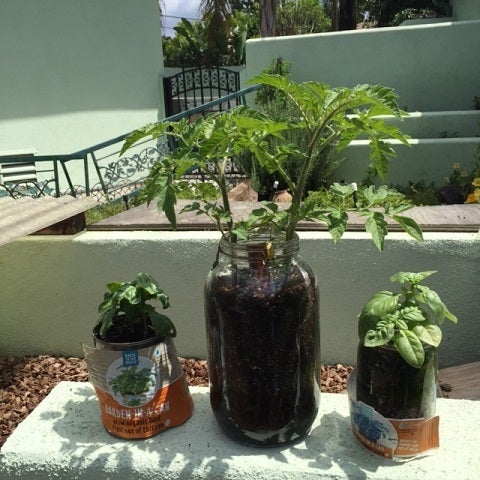
I was never a difficult or picky eater as a child, and I believe I have my parents to thank for that. My memories of childhood mealtimes is somewhat hazy at this point, but I do remember a few guidelines that my parents followed; and from all that I have read in current literature on the subject and experienced in my work as a private chef, their choices are still excellent ones.
So here are a few Do’s and Don’t’s that you may hopefully find useful in coaxing your own offspring to enjoy healthy foods and establish good habits that will endure for life.
CHOICES
Let the kids be involved in making them, starting with the shopping and carrying through to the dinner table. For toddlers, take them with you to the supermarket or, even better, to the farmers market, and encourage them to choose among several choices: “Would you like strawberries or pears today?” “These carrots look so orange, don’t they? Shall we buy them?” With older children, enlist their input in meal planning: “Chicken tonight guys, or how about burgers?” Children are more inclined to eat something if they had a hand in the selection process.
LET THEM HELP
And not just with the dishes! Kids love to participate in the actual cooking. I have clients whose young boys look forward with considerable excitement to making their own individual pizzas; and another client’s little girls are thrilled to learn how to roll little tiny meatballs for their dinner. And it pretty much guarantees they’ll eat their dinner, if they get to create some of it themselves. Not to mention, years later when they get to college they’ll be grateful to have even minimal culinary skills to feed themselves and their roommates.
DON’T PUSH
Offer healthy options, try to include a few things you know they’ll like, but then pull back and let them decide what and how much to eat. For the small-fry, you may need to present something ten times or more before they’ll try it; studies show that sooner or later, they probably will try it, if you let them become accustomed to the notion. And avoid “clean plate syndrome”; it’s best if they learn to stop eating when they’re satisfied. At the same time, serve up sensible portions so they become accustomed to not over-eating. Oh, and you’ll find your own waistline will thank you, lol.
GET ‘EM OUT OF THE HOUSE
This is important for so many reasons. One thing I clearly remember from my childhood was my Mom’s insistence that we not plop ourselves down in front of a TV set (and nowadays a computer screen) after school, but that we get outdoors and engage in whatever fun activity or sport sounded good to us that day. The benefits are obvious – physical exertion is good for the heart, the muscles and all other body parts, not to mention the spirit; and the resulting healthy appetite will encourage your kids to happily consume the well-chosen victuals you put before them at mealtime.
GROW STUFF
Cooking their own food is great; growing their own food is even better. Plus, connecting kids to the origins of food, real food, is an invaluable lesson and experience that will lead them to better eating habits for the rest of their lives. And you don’t even need to have a yard — a sunny windowsill will do just fine (see the photo above).
PLAY WITH YOUR FOOD
Never mind what Granny used to say, do absolutely play with your food! I can’t tell you how many veggies I’ve gotten past previously unwilling lips by making pictures with them and playing guessing games. A few overlapping rounds of cucumber for the body and some carrot sticks for legs and voila! A centipede… And you can use it as an opportunity for a fun lesson about nature, or the origins of words. What could be better?
There are many other good ideas out there – avoid processed foods and sugar, promote veggies and fruits as snacks, serve water instead of soda – but these few guidelines should help you make a good beginning on the road to a happy, healthy family.
Here are a few favorites to get you started...
Ritz-y Fish Sticks
1 large piece tilapia, cut into 2” x 3/4” pieces
1/2 cup low-fat buttermilk
1 cup finely-crushed reduced-fat Ritz crackers
Organic safflower oil for frying
Salt & pepper to taste
Put the cut tilapia into a small bowl with the buttermilk; toss to coat completely.
Place Ritz crumbs in a shallow bowl. Press tilapia pieces two at at a time into the crumbs, turning and coating on all sides. Shake off excess, transfer to a plate and continue with the rest of the tilapia. Chill for 20-30 minutes.
In a non-stick frying pan, pour in enough safflower oil to cover the bottom of the pan with about 1/4 inch of oil and heat over medium heat until shimmering. Maintaining an even heat, cook the tilapia pieces, turning several times, until they’re a golden brown on all sides and cooked through, about 6 minutes. Drain briefly on paper towels, add salt & pepper to taste, and serve immediately.
Makes about 10 pieces.
Roast Tomato & Turkey Mini-Meatball Soup
4 large heirloom tomatoes, quartered
1 small shallot, coarsely chopped
1 tablespoon olive oil
2 cups organic chicken broth
1/3 pound ground dark-meat turkey
1 heaping tablespoon finely-chopped Italian parsley
1 tablespoon safflower oil
Toss tomatoes & shallots with olive oil; placed on foil-covered sheet pan and roast in a pre-heated 375 degree oven until soft and slightly charred, about 15-20 minutes.
Heat broth to boiling in large saucepan. Remove from heat and add cooked tomatoes & shallots; puree in batches in a blender until smooth. Return to pot and keep warm over low heat.
Combine turkey and parsley; form into tiny meatballs, about 1/2 inch in diameter. Heat safflower oil in a frying pan, and sauté meatballs on all sides until cooked through, about 3-4 minutes. Transfer meatballs to soup, add salt & pepper to taste; give it about 5 minutes to come together, then serve.
Makes about 1 quart.
